A Transmissive Imaging Spectrometer for Ground-Based Oxygen A-Band Radiance Observation
Abstract
:1. Introduction
2. Instrument Design and Calibration
2.1. Optical Design
2.2. Image Output Method
2.3. Wavelength Calibration
2.4. Radiometric Calibration
2.5. Geometric Calibration and Correction
3. Field Test
3.1. Overview of Field Test
3.2. Field Test Data and Analysis
4. Discussion
5. Conclusions
Author Contributions
Funding
Institutional Review Board Statement
Informed Consent Statement
Data Availability Statement
Acknowledgments
Conflicts of Interest
References
- Mitchell, R.M.; O’Brien, D.M. Error Estimates for Passive Satellite Measurement of Surface Pressure Using Absorption in the A Band of Oxygen. J. Atmos. Sci. 1987, 44, 1981–1990. [Google Scholar] [CrossRef]
- Fischer, J.; Grassl, H. Detection of Cloud-Top Height from Backscattered Radiances within the Oxygen A Band. Part 1: Theoretical Study. J. Appl. Meteorol. 1991, 30, 1245–1259. [Google Scholar] [CrossRef]
- Wagner, T.; Erle, F.; Marquard, L.; Otten, C.; Pfeilsticker, K.; Senne, T.; Stutz, J.; Platt, U. Cloudy sky optical paths as derived from differential optical absorption spectroscopy observations. J. Geophys. Res. Atmos. 1998, 103, 25307–25321. [Google Scholar] [CrossRef]
- Stam, D.M.; De Haan, J.F.; Hovenier, J.W.; Stammes, P. Degree of linear polarization of light emerging from the cloudless atmosphere in the oxygen A band. J. Geophys. Res. Atmos. 1999, 104, 16843–16858. [Google Scholar] [CrossRef] [Green Version]
- Portmann, R.W.; Solomon, S.; Sanders, R.W.; Daniel, J.S.; Dutton, E.G. Cloud modulation of zenith sky oxygen photon path lengths over Boulder, Colorado: Measurement versus model. J. Geophys. Res. Atmos. 2001, 106, 1139–1155. [Google Scholar] [CrossRef]
- Boesche, E.; Stammes, P.; Ruhtz, T.; Preusker, R.; Fischer, J. Effect of aerosol microphysical properties on polarization of skylight: Sensitivity study and measurements. Appl. Opt. 2006, 45, 8790–8805. [Google Scholar] [CrossRef] [PubMed]
- Min, Q.L. A high-resolution oxygen A-band and water vapor band spectrometer. J. Geophys. Res. 2004, 109, D02202. [Google Scholar] [CrossRef] [Green Version]
- Lelli, L.; Kokhanovsky, A.A.; Rozanov, V.V.; Vountas, M.; Burrows, J.P. Linear trends in cloud top height from passive observations in the oxygen A-band. Atmos. Chem. Phys. 2014, 14, 5679–5692. [Google Scholar] [CrossRef] [Green Version]
- Yang, Y.; Meyer, K.; Wind, G.; Zhou, Y.; Marshak, A.; Platnick, S.; Min, Q.; Davis, A.B.; Joiner, J.; Vasilkov, A.; et al. Cloud Products from the Earth Polychromatic Imaging Camera (EPIC): Algorithms and Initial Evaluation. Atmos. Meas. Tech. 2019, 12, 2019–2031. [Google Scholar] [CrossRef] [PubMed] [Green Version]
- Richardson, M.; Stephens, G.L. Information content of OCO-2 oxygen A-band channels for retrieving marine liquid cloud properties. Atmos. Meas. Tech. 2018, 11, 1515–1528. [Google Scholar] [CrossRef]
- Schuessler, O.; Loyola Rodriguez, D.G.; Doicu, A.; Spurr, R. Information Content in the Oxygen A-Band for the Retrieval of Macrophysical Cloud Parameters. IEEE Trans. Geosci. Remote Sens. 2014, 52, 3246–3255. [Google Scholar] [CrossRef] [Green Version]
- Du, S.; Liu, L.; Liu, X.; Zhang, X.; Zhang, X.; Bi, Y.; Zhang, L. Retrieval of global terrestrial solar-induced chlorophyll fluorescence from TanSat satellite. Sci. Bull. 2018, 63, 1502–1512. [Google Scholar] [CrossRef] [Green Version]
- Riris, H.; Rodriguez, M.D.; Allan, G.R.; Hasselbrack, W.E.; Stephen, M.A.; Abshire, J.B. Airborne lidar measurements of atmospheric pressure made using the oxygen A-band. In Proceedings of the Lasers, Sources, and Related Photonic Devices, San Diego, CA, USA, 29 January–1 February 2012; p. LT2B.5. [Google Scholar]
- Min, Q.L. Cloud, radiation, and photon path length distributions. In Proceedings of the Fourier Transform Spectroscopy/Hyperspectral Imaging and Sounding of the Environment, Alexandria, VA, USA, 31 January–3 February 2005. [Google Scholar]
- Ding, S.; Wang, J.; Xu, X. Polarimetric remote sensing in oxygen A and B bands: Sensitivity study and information content analysis for vertical profile of aerosols. Atmos. Meas. Tech. 2016, 9, 2077–2092. [Google Scholar] [CrossRef] [Green Version]
- Sheese, P.E.; McDade, I.C.; Gattinger, R.L.; Llewellyn, E.J. Atomic oxygen densities retrieved from Optical Spectrograph and Infrared Imaging System observations of O-2 A-band airglow emission in the mesosphere and lower thermosphere. J. Geophys. Res.-Atmos. 2011, 116, D01303. [Google Scholar] [CrossRef]
- Komar, G.J.; Hamazaki, T.; Wang, J.; Kaneko, Y.; Kuze, A.; Kimura, T.; Kondo, K. FTS for Greenhouse Gases Observing Satellite (GOSAT). In Proceedings of the Enabling Sensor and Platform Technologies for Spaceborne Remote Sensing, Honolulu, HI, USA, 9–10 November 2004. [Google Scholar]
- Suto, H.; Kataoka, F.; Kikuchi, N.; Knuteson, R.O.; Butz, A.; Haun, M.; Buijs, H.; Shiomi, K.; Imai, H.; Kuze, A. Thermal and near-infrared sensor for carbon observation Fourier transform spectrometer-2 (TANSO-FTS-2) on the Greenhouse gases Observing SATellite-2 (GOSAT-2) during its first year in orbit. Atmos. Meas. Tech. 2021, 14, 2013–2039. [Google Scholar] [CrossRef]
- Zhang, H.; Lin, C.; Zheng, Y.; Wang, W.; Tian, L.; Liu, D.; Li, S. Development and characterization of Carbon Observing Satellite. J. Appl. Remote Sens. 2016, 10, 024003. [Google Scholar] [CrossRef]
- Herman, J.; Huang, L.; McPeters, R.; Ziemke, J.; Cede, A.; Blank, K. Synoptic ozone, cloud reflectivity, and erythemal irradiance from sunrise to sunset for the whole earth as viewed by the DSCOVR spacecraft from the earth–sun Lagrange 1 orbit. Atmos. Meas. Tech. 2018, 11, 177–194. [Google Scholar] [CrossRef] [Green Version]
- Marshak, A.; Herman, J.; Szabo, A.; Blank, K.; Cede, A.; Carn, S.; Geogdzhayev, I.; Huang, D.; Huang, L.K.; Knyazikhin, Y.; et al. Earth Observations from DSCOVR/EPIC Instrument. Bull. Am. Meteorol. Soc. 2018, 99, 1829–1850. [Google Scholar] [CrossRef] [PubMed]
- Frankenberg, C.; Hasekamp, O.; O’Dell, C.; Sanghavi, S.; Butz, A.; Worden, J. Aerosol information content analysis of multi-angle high spectral resolution measurements and its benefit for high accuracy greenhouse gas retrievals. Atmos. Meas. Tech. 2012, 5, 1809–1821. [Google Scholar] [CrossRef] [Green Version]
- Min, Q.; Yin, B.; Li, S.; Berndt, J.; Harrison, L.; Joseph, E.; Duan, M.; Kiedron, P. A high-resolution oxygen A-band spectrometer (HABS) and its radiation closure. Atmos. Meas. Tech. 2014, 7, 1711–1722. [Google Scholar] [CrossRef]
- Min, Q. Photon path length distributions inferred from rotating shadowband spectrometer measurements at the Atmospheric Radiation Measurements Program Southern Great Plains site. J. Geophys. Res. 2003, 108, D15. [Google Scholar] [CrossRef] [Green Version]
- Xue, Q.; Lu, F.; Duan, M.; Zheng, Y.; Wang, X.; Cao, D.; Lin, G.; Tian, J. Optical design of double-grating and double wave band spectrometers using a common CCD. Appl. Opt. 2018, 57, 6823–6830. [Google Scholar] [CrossRef] [PubMed]
- Xia, G.; Cai, X.; Feng, Z.; Cheng, L.; Hu, M. Simultaneous multipolarization and high-resolution oxygen A-band spectrometer optical design with the astigmatism-corrected method. Opt. Express 2020, 28, 11227–11236. [Google Scholar] [CrossRef] [PubMed]
- Li, J.; Lin, G.; Wu, H.; Duan, M.; Cao, D.; Wang, L. Design and Verification of a Double-Grating Spectrometer System (DGSS) for Simultaneous Observation of Aerosols, Water Vapor and Clouds. Remote Sens. 2022, 14, 2492. [Google Scholar] [CrossRef]
- Min, Q.; Harrison, L.C. Retrieval of Atmospheric Optical Depth Profiles from Downward-Looking High-Resolution O2A-Band Measurements: Optically Thin Conditions. J. Atmos. Sci. 2004, 61, 2469–2477. [Google Scholar] [CrossRef]
- Sami Ur Kumar, A.B.; Banerjee, A. SNR improvement for hyperspectral application using frame and pixel binning. In Proceedings of the Earth Observing Missions and Sensors: Development, Implementation, and Characterization IV, New Delhi, India, 4–7 April 2016. [Google Scholar]
- Zhang, H.; Zheng, Y.; Lin, C.; Wang, W.; Wang, Q.; Li, S. Laboratory spectral calibration of TanSat and the influence of multiplex merging of pixels. Int. J. Remote Sens. 2017, 38, 3800–3816. [Google Scholar] [CrossRef]
- Li, S.; Min, Q. Wavelength registration of high resolution oxygen A-band spectral measurements. J. Quant. Spectrosc. Radiat. Transf. 2013, 122, 106–113. [Google Scholar] [CrossRef]
- Hu, B.-L.; Zhang, J.; Cao, K.-Q.; Hao, S.-J.; Sun, D.-X.; Liu, Y.-N. Research on the Etalon Effect in Dispersive Hyperspectral VNIR Imagers Using Back-Illuminated CCDs. IEEE Trans. Geosci. Remote Sens. 2018, 56, 5481–5494. [Google Scholar] [CrossRef]
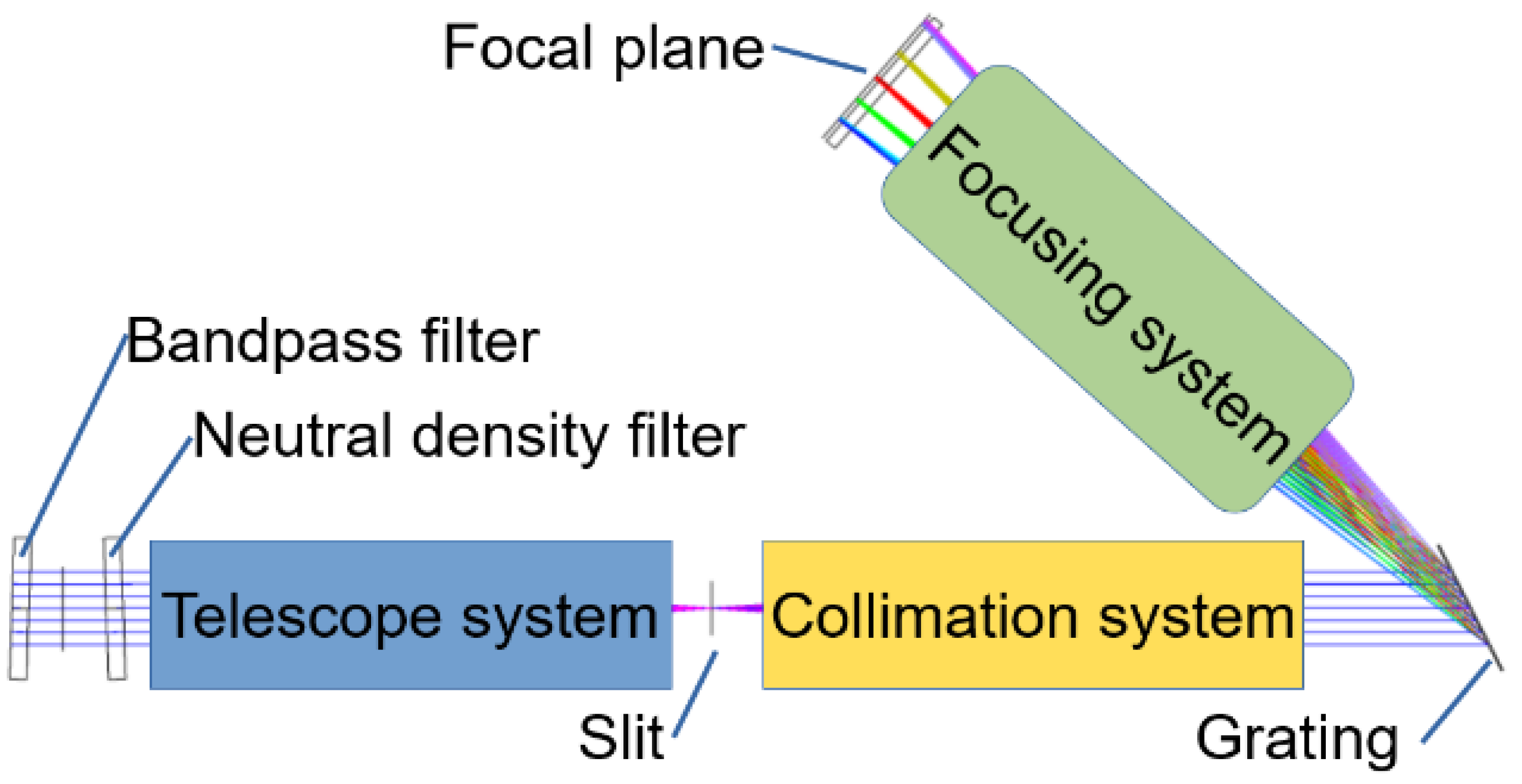
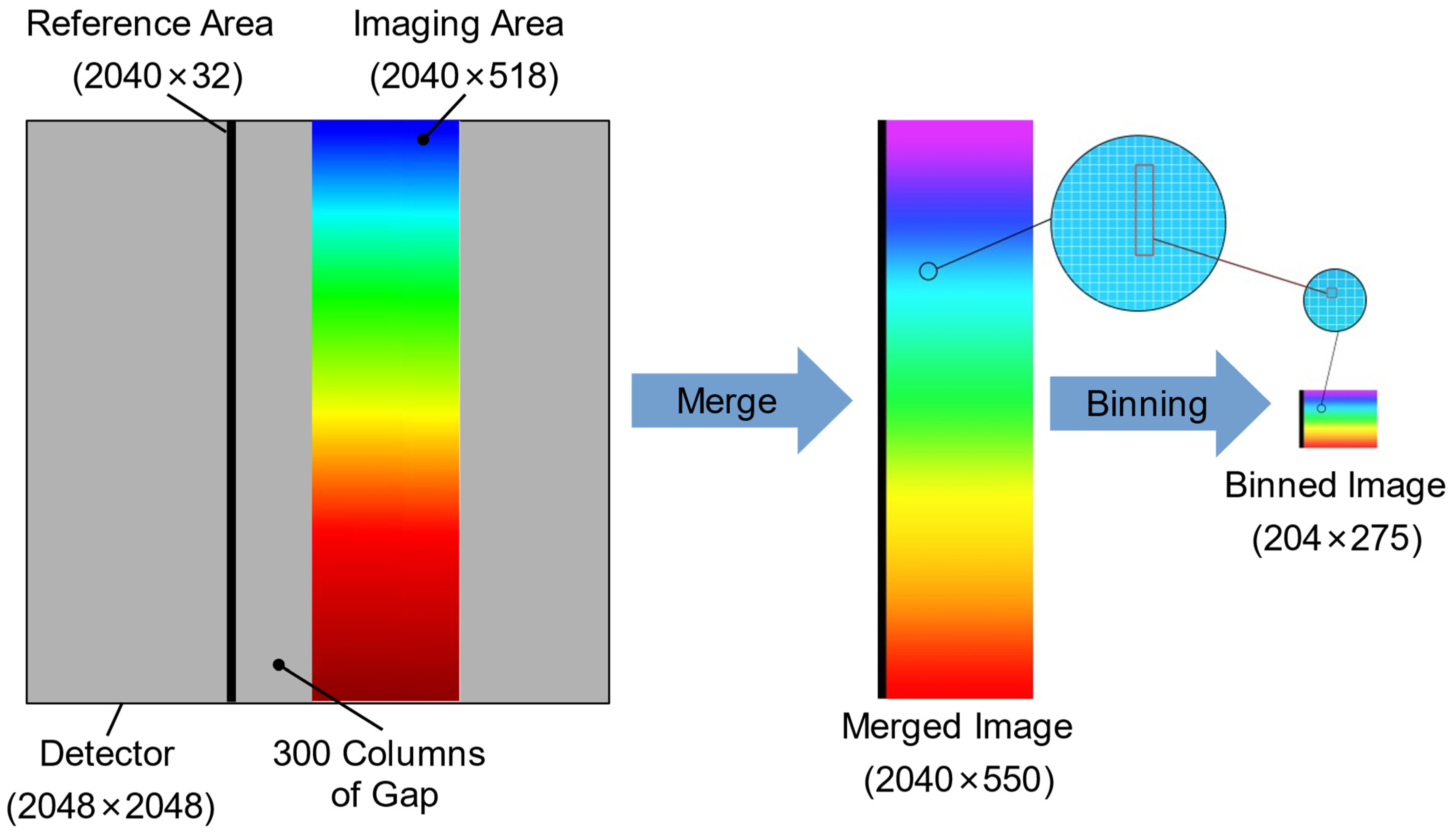
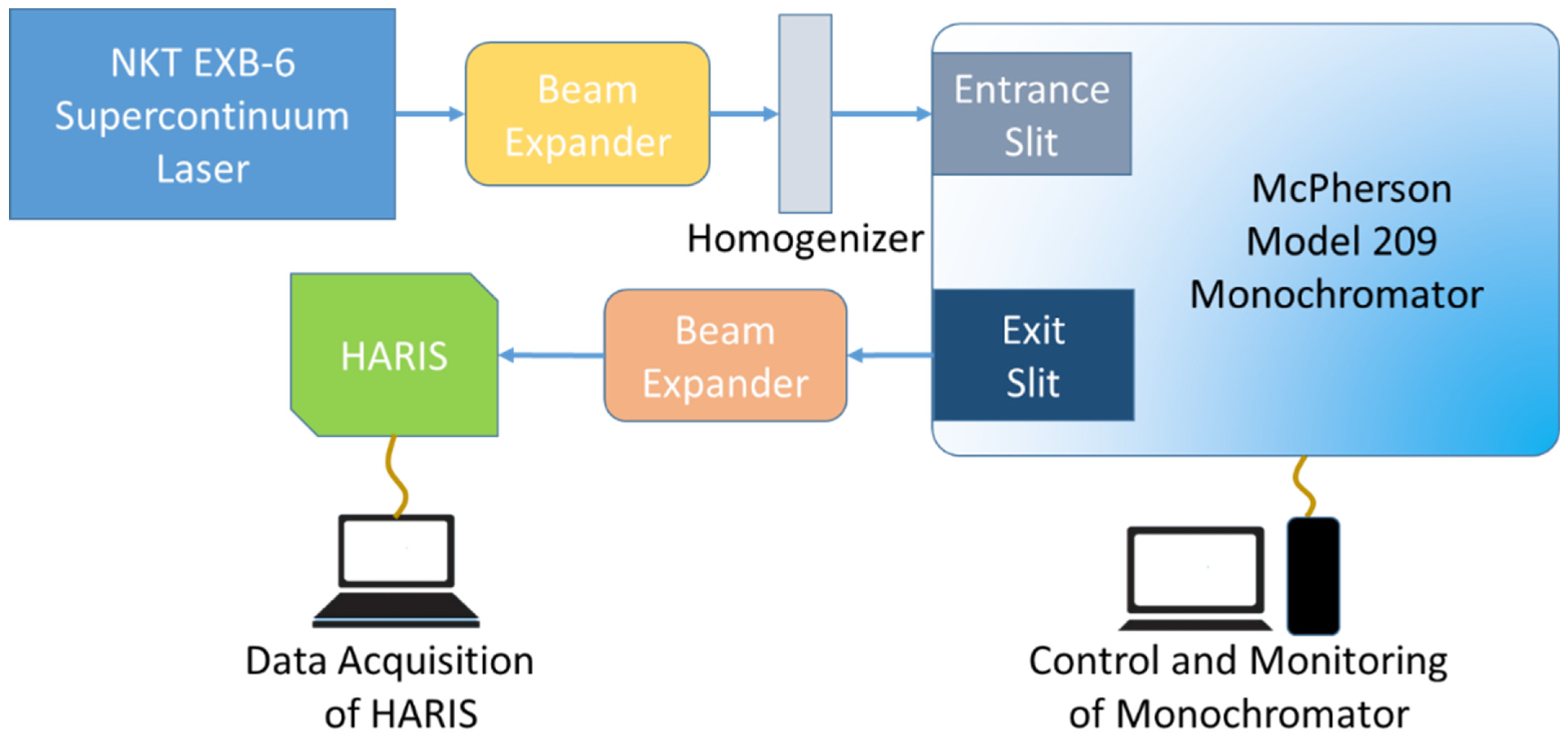



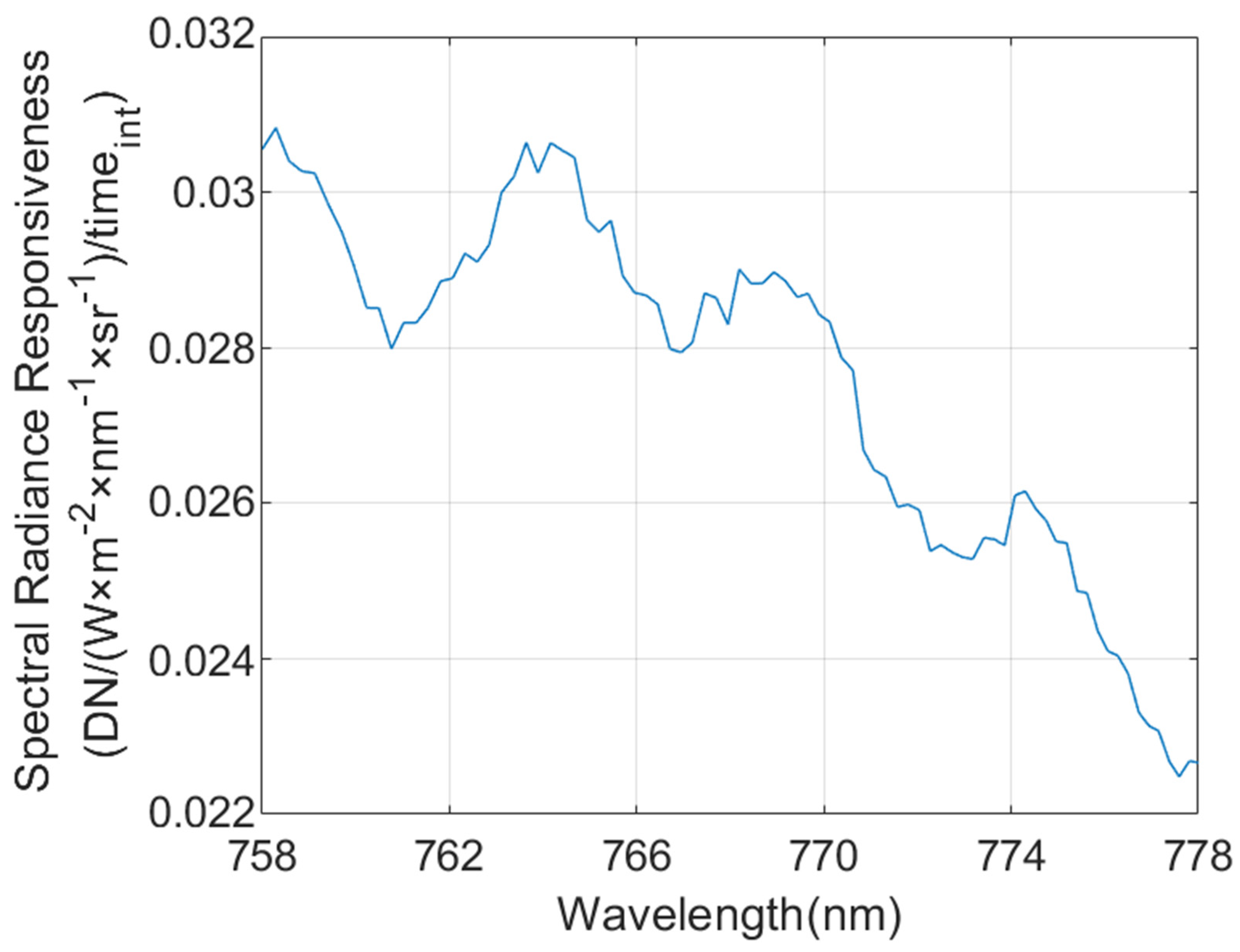

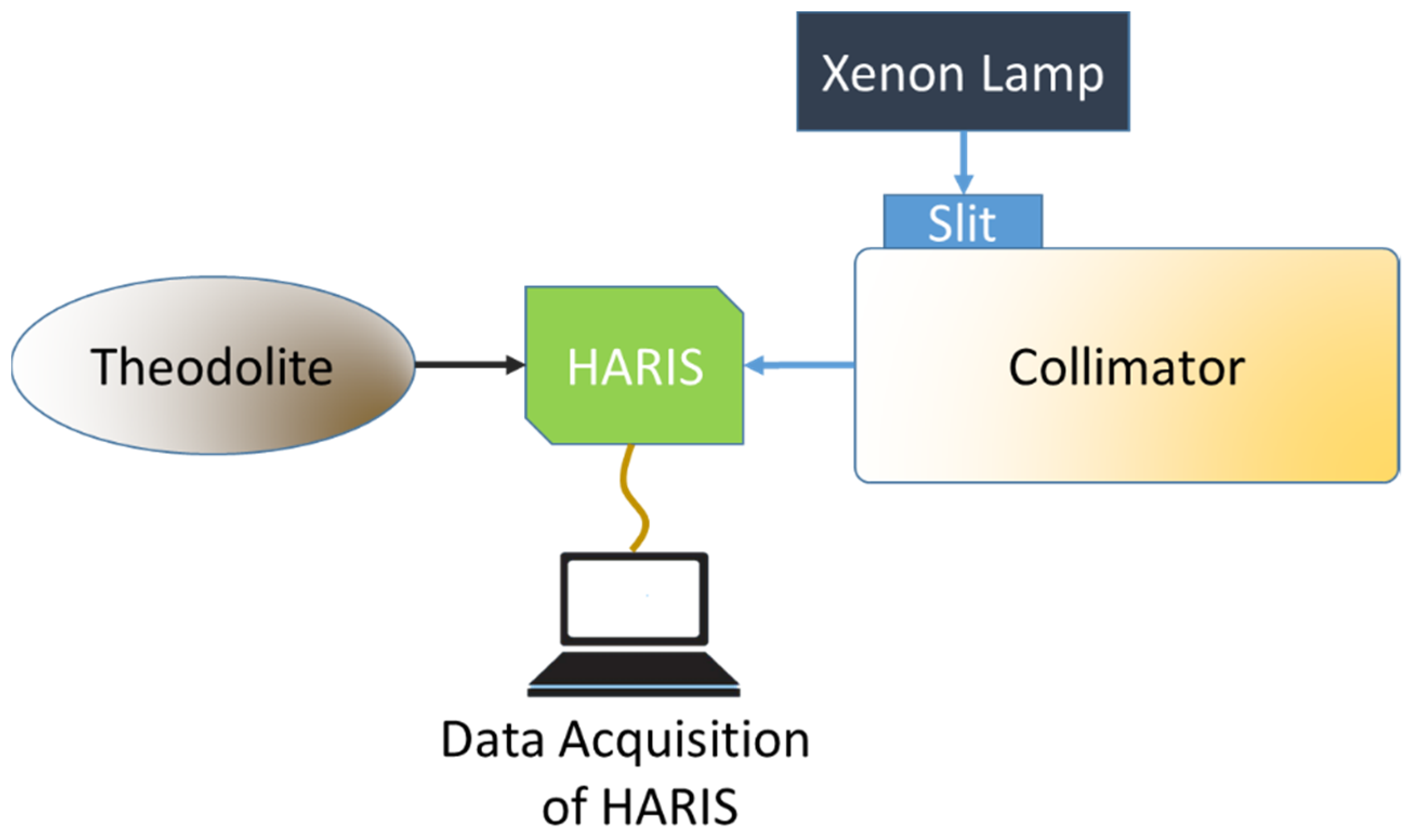
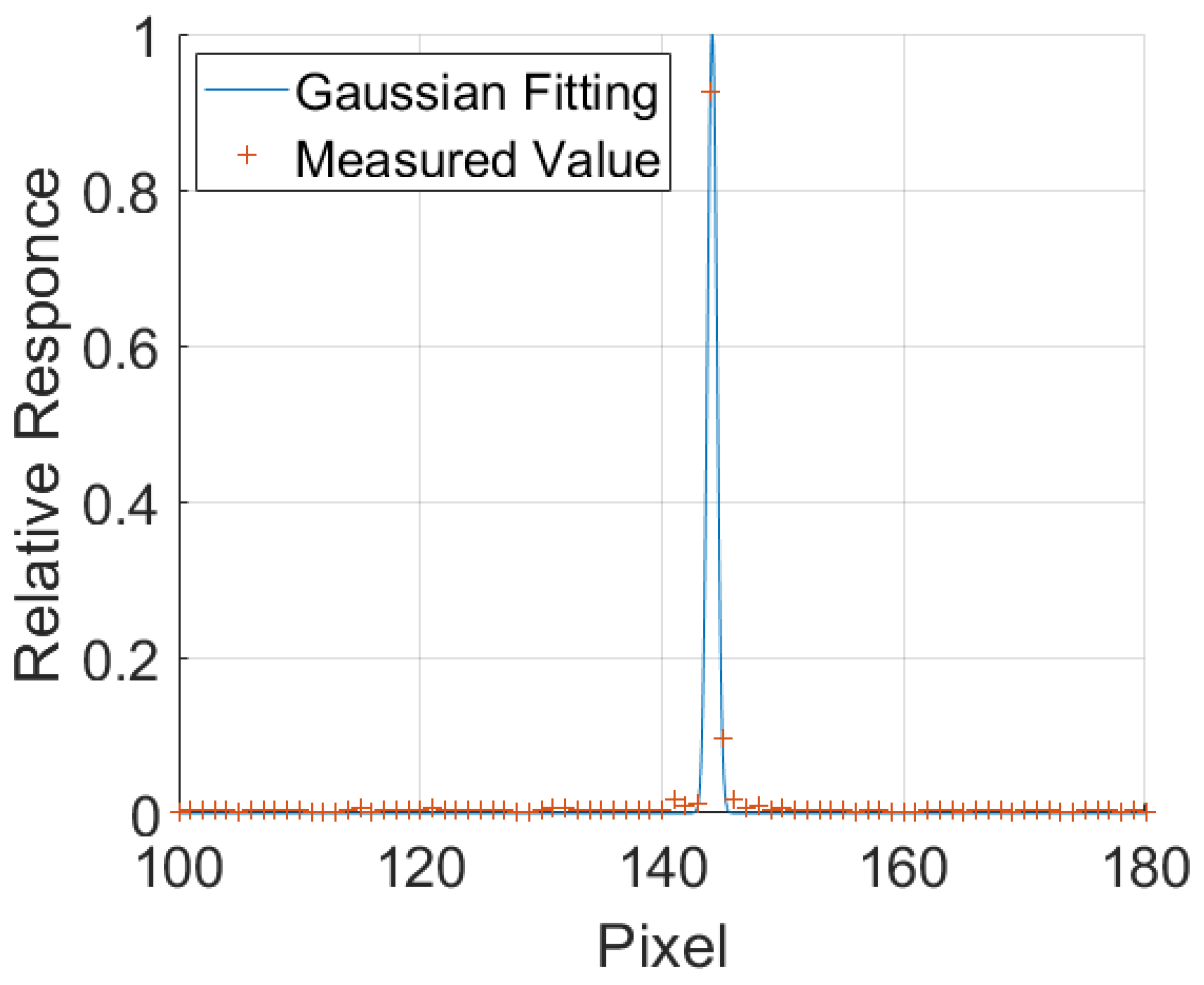

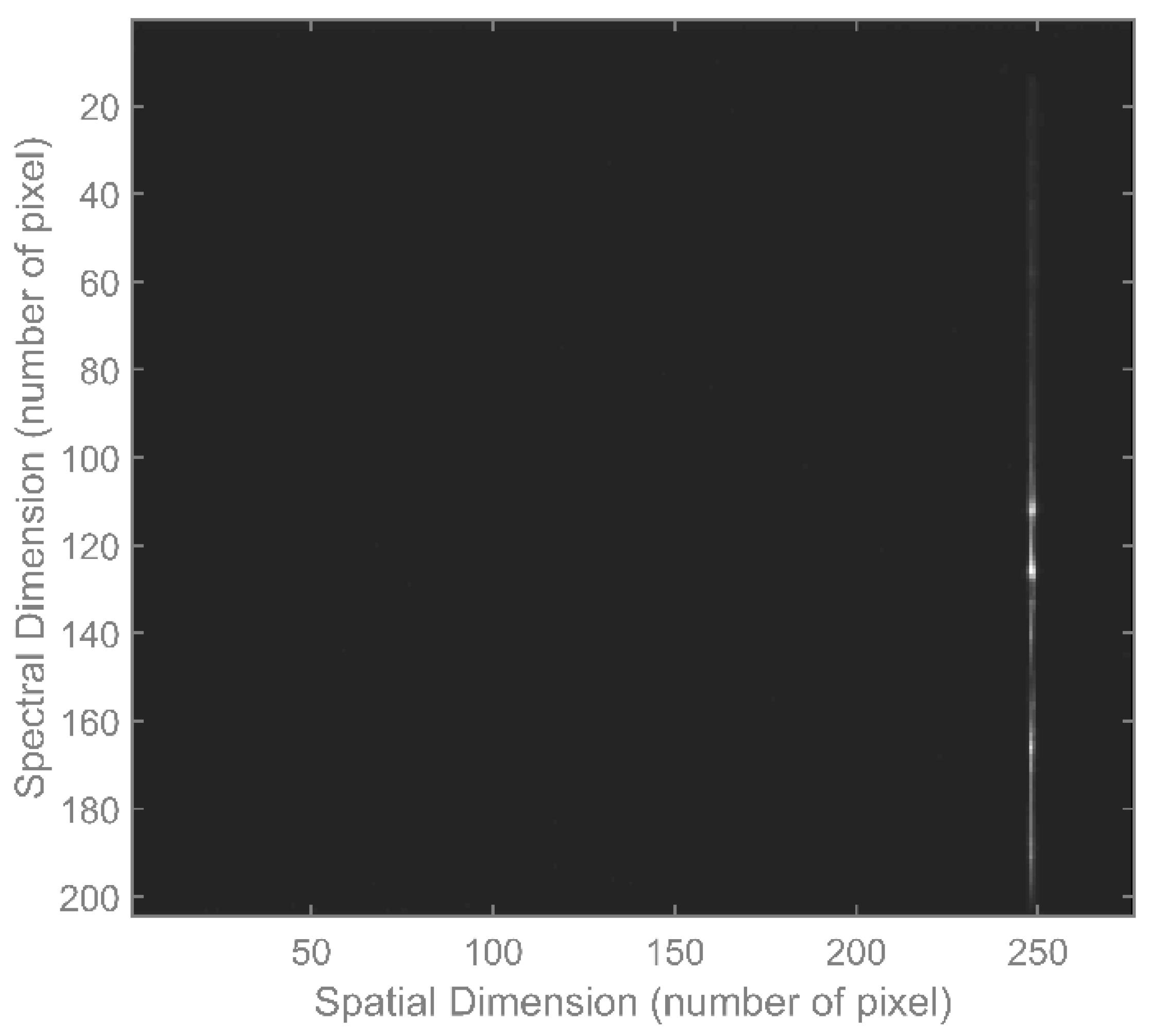
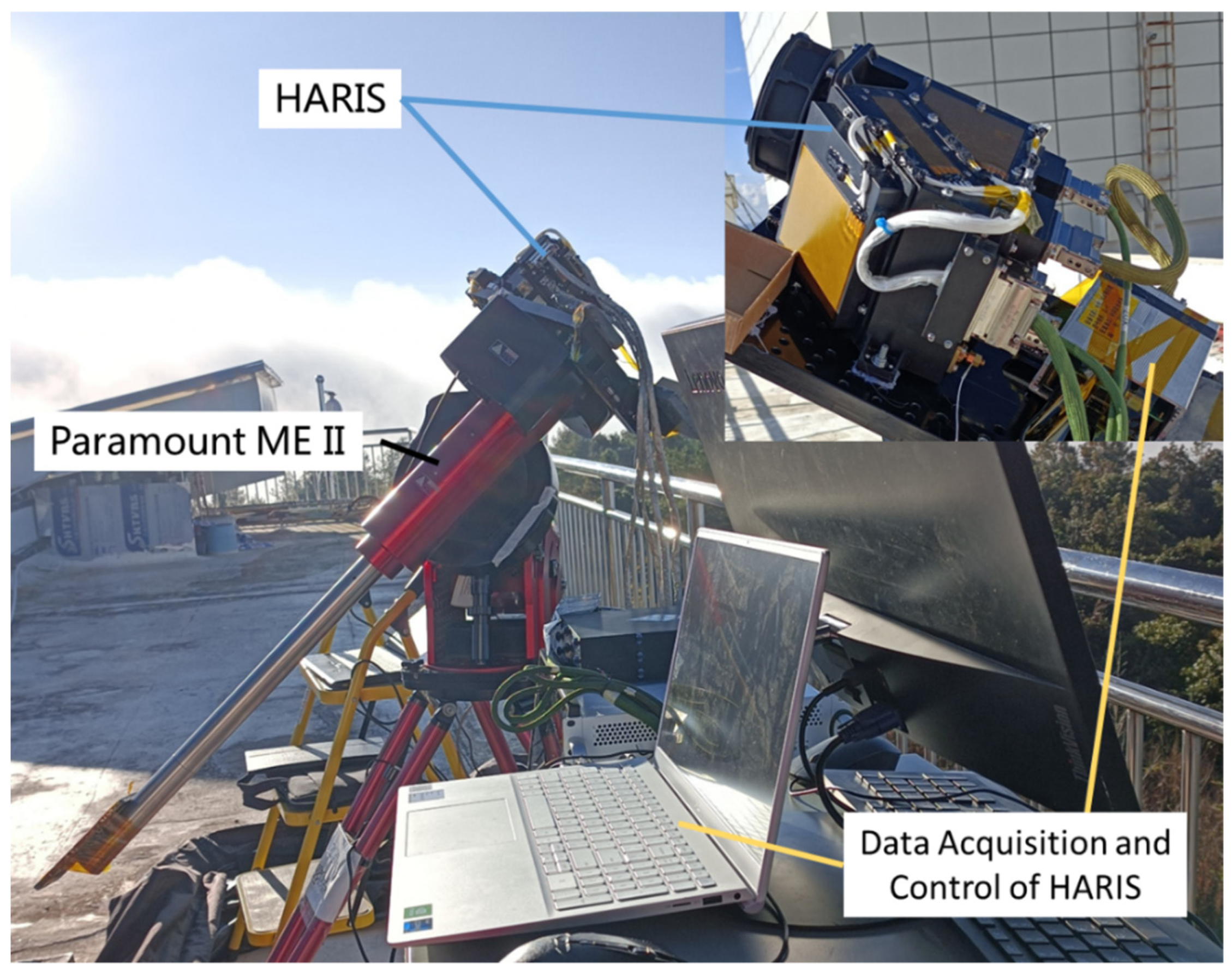
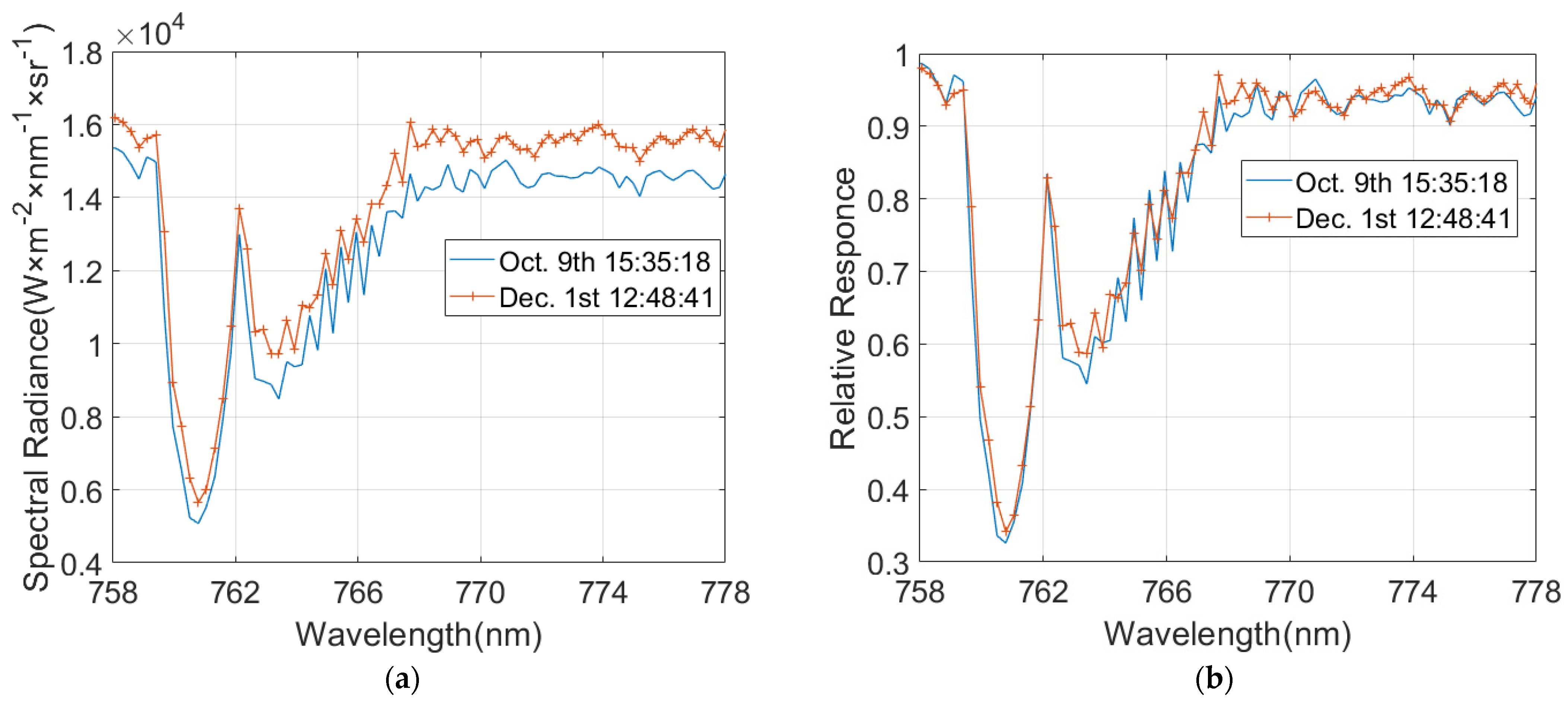
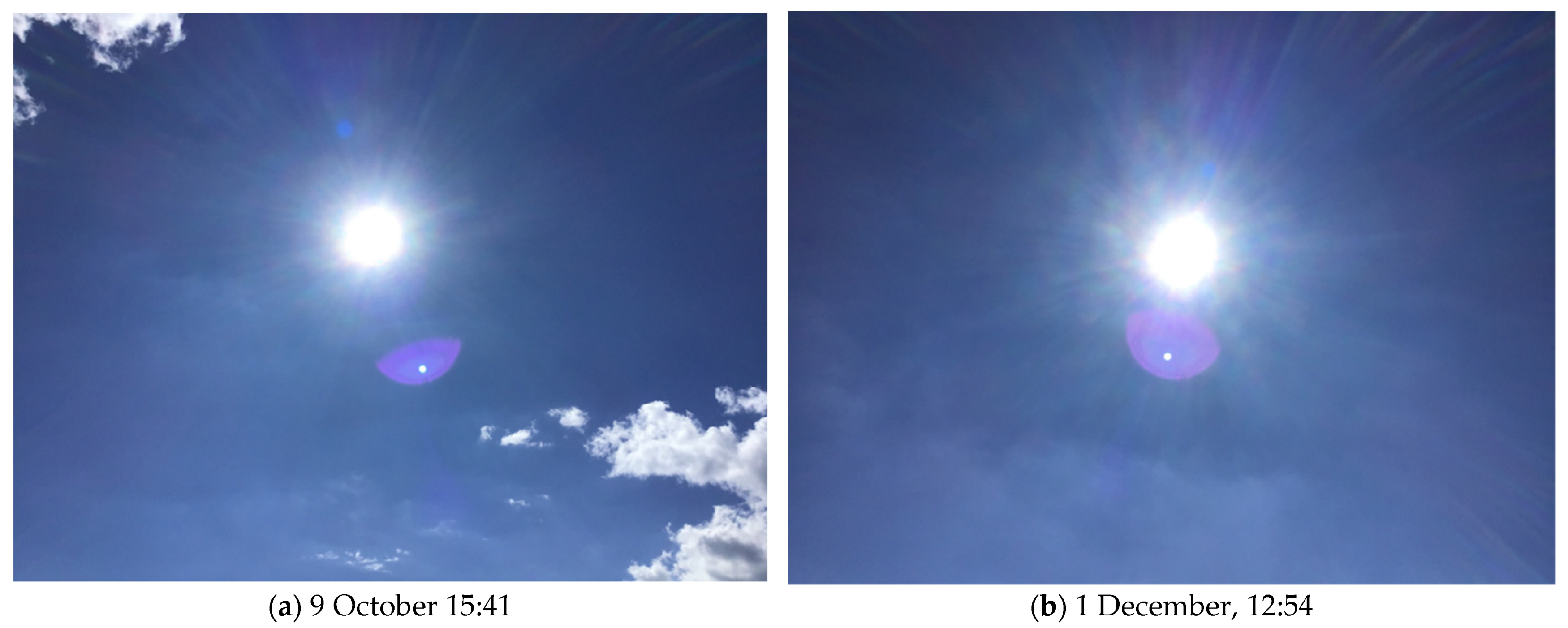


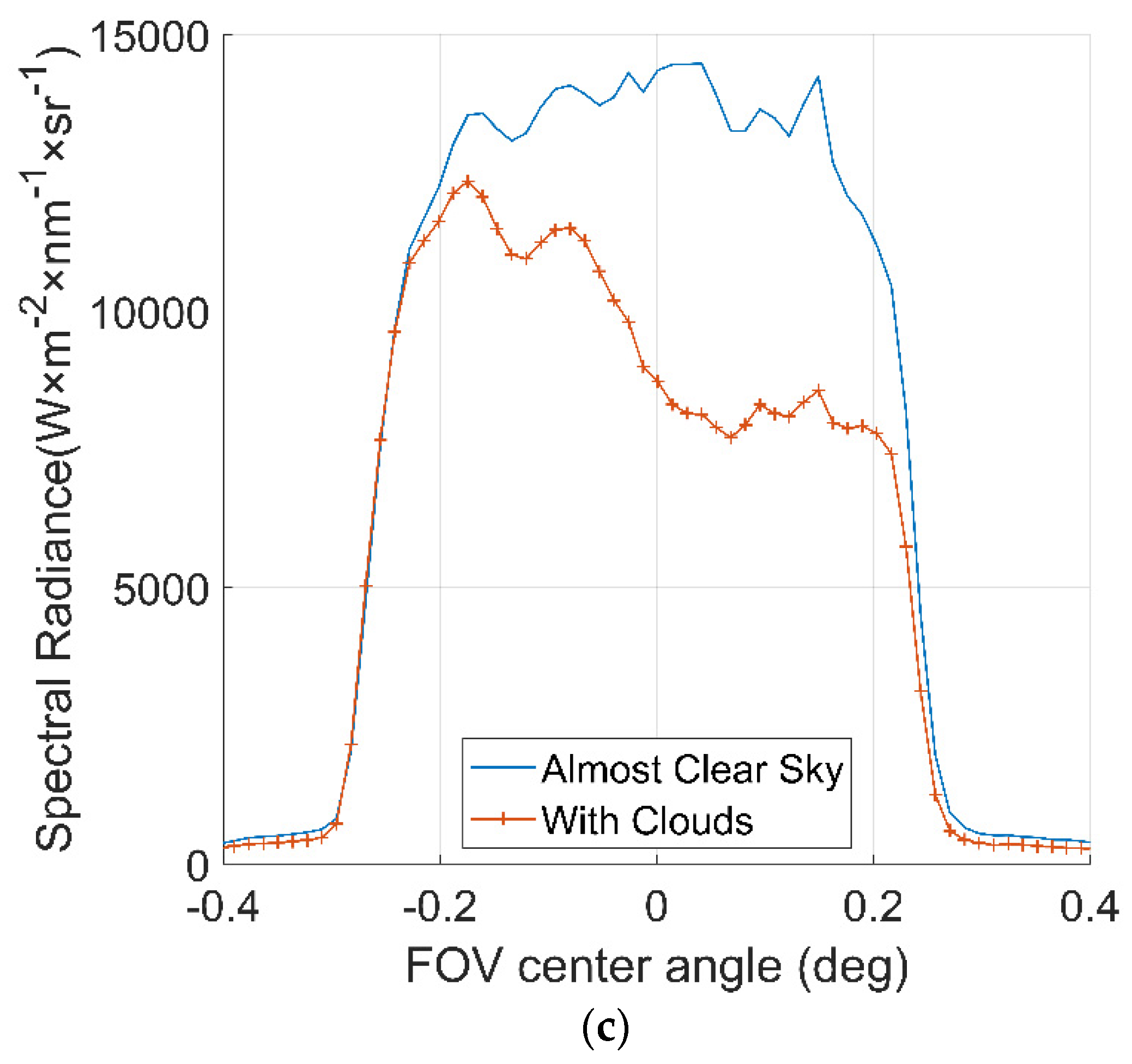
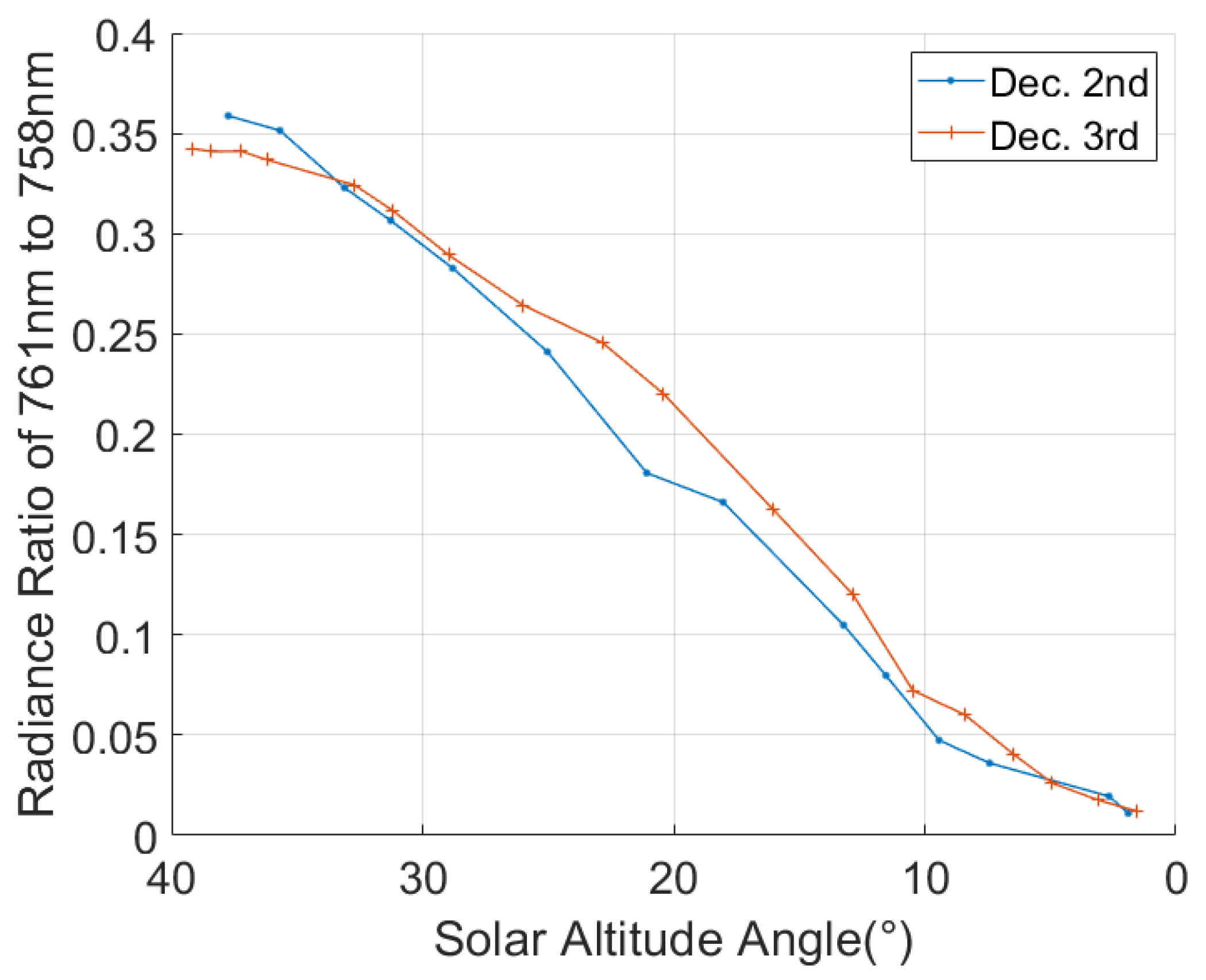


| Instrument | Reference | Instrument Dimensions (Mm) | Observation Bands (nm) | Spectral Resolution (nm) | Maximum SNR | Cooling Condition | Imaging Condition |
|---|---|---|---|---|---|---|---|
| HARIS | This work | 230(L) × 270(W) × 170(H) | 758–778 | 0.33 | >500 | without CMOS cooling | Direct imaging |
| HABS | Min et al. [23] | Specific dimensional parameters not mentioned | 759–769 | 0.016 | >1300 | cooling CCD to −70 °C | Fiber optic homogenization imaging |
| RSS | Min et al. [24] | not mentioned | 750–780 | 2.3 | not mentioned | not mentioned | not mentioned |
| SPHABS | Xia et al. [26] | not mentioned | 759–770 | 0.016 | not mentioned | not mentioned | Fiber optic homogenization imaging |
| DGSS | Li et al. [27] | 1050(L) × 480(W) × 350(H) | 758–778 * | 0.07 * | >300 | cooling CMOS to −10 °C | Fiber optic homogenization imaging |
Publisher’s Note: MDPI stays neutral with regard to jurisdictional claims in published maps and institutional affiliations. |
© 2022 by the authors. Licensee MDPI, Basel, Switzerland. This article is an open access article distributed under the terms and conditions of the Creative Commons Attribution (CC BY) license (https://creativecommons.org/licenses/by/4.0/).
Share and Cite
Wu, H.; Wu, J.; Hu, N.; Cui, H.; Wu, P.; Lin, G.; Cao, D.; Zhang, Z.; Shao, Y.; Li, B. A Transmissive Imaging Spectrometer for Ground-Based Oxygen A-Band Radiance Observation. Photonics 2022, 9, 729. https://doi.org/10.3390/photonics9100729
Wu H, Wu J, Hu N, Cui H, Wu P, Lin G, Cao D, Zhang Z, Shao Y, Li B. A Transmissive Imaging Spectrometer for Ground-Based Oxygen A-Band Radiance Observation. Photonics. 2022; 9(10):729. https://doi.org/10.3390/photonics9100729
Chicago/Turabian StyleWu, Heng, Junqing Wu, Nanxi Hu, Hang Cui, Pengfei Wu, Guanyu Lin, Diansheng Cao, Zihui Zhang, Yingqiu Shao, and Bo Li. 2022. "A Transmissive Imaging Spectrometer for Ground-Based Oxygen A-Band Radiance Observation" Photonics 9, no. 10: 729. https://doi.org/10.3390/photonics9100729





